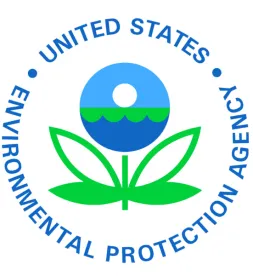The U.S. Environmental Protection Agency (“EPA”) has released the text of a draft proposed rule that seeks to amend the new source performance standards (“NSPS”) addressing methane and volatile organic compounds (“VOC”) from new sources across the oil and gas industry (i.e., production, processing, transmission, and storage). This proposed rule is a part of the Obama Administration’s “Climate Action Plan,” and its particular focus on methane as a potent greenhouse gas (“GHG”). Earlier this year, the Administration committed to reduce methane emissions from the oil and gas sector by 40 to 45 percent from 2012 levels by 2025.
Pursuant to Section 111(b)(1)(A) of the Clean Air Act (“CAA”), the crude oil and natural gas industry is listed as a source category, for which EPA is required to promulgate standards of performance. The EPA updated and established additional VOC standards for several oil and natural gas-related operations through its 2012 NSPS, and targeted amendments in 2013 and 2014. These regulations were each challenged administratively and in litigation.
The existing regulations did not cover methane. In 2014, the Administration released its “Methane Strategy,” followed by a series of five EPA “white papers” on methane emission sources. Purportedly based on those studies, and comments received, EPA now proposes to add to the 2012 NSPS and promote consistency across the sector by expanding VOC coverage and creating first-time standards for methane. Key proposals include:
-
Creating methane standards for emission sources not currently covered by the 2012 NSPS and for emission sources currently regulated only for VOCs.
-
Extending current VOC standards to sources and equipment not regulated under the 2012 NSPS.
-
“Improving implementation” of several contested aspects of the 2012 NSPS.
-
Requiring variety of specified actions for methane reductions, e.g., mandatory fugitive emissions surveys with optical gas imaging technology and “green completions” for some hydraulically fractured oil well completions
These changes will affect a variety of facilities and equipment including, but not limited to, compressors, pneumatic controllers, pneumatic pumps and hydraulically fractured oil well and gas well completions. EPA’s proposal also highlights items not previously regulated by the 2012 NSPS, such as equipment downstream from the wellhead e.g. for transmission, and well site fugitive emissions. While the proposed rule would only apply to facilities constructed, modified, or reconstructed after the date of publication of the proposed rule in the Federal Register, EPA suggests voluntary guidelines for existing sources, and additional controls may be forthcoming.
In support of the proposal, EPA proffers that the regulations would result in a reduction of 340,000 to 400,000 tons of methane, 170,000 to 180,000 tons of VOCs and 1,900 to 2,500 tons of hazardous air pollutants (“HAPs”) in 2025. After considering costs, EPA estimates that net benefits are between $120 and $150 million in 2025. EPA adds that it is unable to monetize all benefits it expects from the proposal.
Anticipating likely public comment themes, the proposed rule offers several reassurances. For example, EPA believes compliance with stricter state air rules might demonstrate alternate compliance for NSPS purposes. EPA also opines that steps to reduce VOCs generally should also be sufficient to reduce methane. EPA further pledges to continue working with the Bureau of Land Management to avoid duplication with its pending proposal expected this Fall to address venting and flaring.
The proposed rule governing methane and VOC emissions from new sources is part of a package of related EPA proposals affecting the oil and gas industry. EPA also proposes draft guidelines for states to reduce VOC emissions from existing oil and gas sources in areas with smog problems; a “Source Determination Rule” seeking to clarify what oil and gas equipment constitutes a single source for Clean Air Act permitting; and a federal implementation plan (FIP) implementing the Minor New Source Review Program in Indian Country for oil and natural gas production. Meanwhile, EPA is not focusing exclusively on methane related to oil and gas activities -- mere days earlier EPA issued separate proposals to reduce methane from existing and new landfills.
Comments on the proposed rule for new sources, and the other related proposals, will be due 60 days after each proposal is published in the Federal Register. Additional information from EPA regarding its new oil and gas proposals is available here. Additional information regarding President Obama’s Climate Action Plan is available here.






 />i
/>i

